
| HOME |
| INDEX ARTICLES |
| CONTACT US |
|
Arts & Culture
![]()
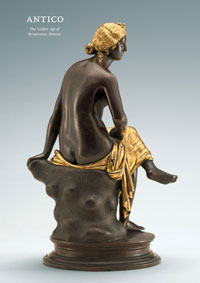 Antico's Rare Renaissance Sculpture at the National Gallery of Art, Washington
Antico's Rare Renaissance Sculpture at the National Gallery of Art, Washington
November 6, 2011 ~Pier Jacopo Alari Bonacolsi, known as Antico (c. 1455–1528), transformed the art of bronze sculpture. His contributions are celebrated inAntico: The Golden Age of Renaissance Bronzes, the first monographic exhibition in the United States devoted to the Italian sculptor and goldsmith. On view at the National Gallery of Art, Washington, from November 6, 2011, through April 8, 2012, the exhibition includes some 40 rare works—medals, reliefs, busts, and Antico's renowned statuettes—more than three-quarters of the sculptor's known works. Read more . . .>>
Turner's Modern Rome at the Getty Museum
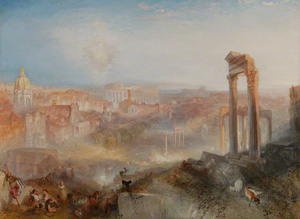 March 14, 2011 "Ten years after his final journey to Rome, Turner envisioned the Eternal City through a veil of memory. Baroque churches and ancient monuments in and around the Roman Forum seem to dissolve in iridescent light shed by a moon rising at left and a sun setting behind the Capitoline Hill at right. Amidst these splendors, the city's inhabitants carry on with their daily activities. The picture's nacreous palette and shimmering light effects exemplify Turner at his most accomplished. Read more . . >>
March 14, 2011 "Ten years after his final journey to Rome, Turner envisioned the Eternal City through a veil of memory. Baroque churches and ancient monuments in and around the Roman Forum seem to dissolve in iridescent light shed by a moon rising at left and a sun setting behind the Capitoline Hill at right. Amidst these splendors, the city's inhabitants carry on with their daily activities. The picture's nacreous palette and shimmering light effects exemplify Turner at his most accomplished. Read more . . >>
Pompeii and the Roman Villa at the National Gallery of Arts
The first exhibition devoted to ancient Roman art at the National Gallery of Art will run from October 19, 2008 through March 22, 2009. Luxurious works of art excavated from the opulent houses of the urban elite in Pompeii and from nearby imperial villas along the shoreline of the Bay of Naples illustrate the region’s importance as an artistic center.
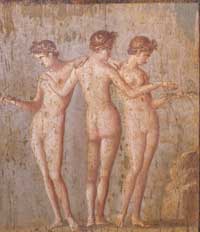
“Pompeii and the Roman Villa” includes some 150 works of sculpture, painting, mosaic, and luxury arts, including recent discoveries on view in the United States for the first time and celebrated finds from earlier excavations. Exquisite objects from the richly decorated villas reveal the breadth and richness of cultural and artistic life, as well as the influence of classical Greece on Roman art and culture in this region.
In the first century BC, the picturesque Bay of Naples became a favorite retreat for vacationing emperors, senators, and other prominent Romans.
They built lavish seaside villas in the shadow of Mt. Vesuvius where they could indulge in absolute leisure, read and write, exercise, enjoy their gardens and the views, and entertain friends. Julius Caesar, Caligula, Claudius, and Nero owned seaside villas in Baiae; the emperor Augustus vacationed in Surrentum (Sorrento), Capreae (Capri), and Pausilypon (Posillipo); and the lawyer Cicero had homes at Cumae (Cuma) and Puteoli (Pozzuoli) as well as in Pompeii. The artists commissioned to adorn these lavish villas also worked for well-to-do residents of Pompeii and Herculaneum who emulated the lifestyles of the powerful elite.
Drawn from the collections of the Museo Archeologico Nazionale, Naples, and from site museums at Pompeii, Boscoreale, Torre Annunziata, and Baia, as well as museums and private collections in the United States and Europe, the exhibition is organized in five sections:
Patrons at Home: Marble or bronze portraits of members of the imperial family and individualized private portraits; frescoes depicting seaside villas, marine delicacies available f rom the Bay of Naples, and intimate genre scenes; colorful glass vessels, and gold jewelry reflect the owners’ taste for luxury.
rom the Bay of Naples, and intimate genre scenes; colorful glass vessels, and gold jewelry reflect the owners’ taste for luxury.
nCourtyards and Gardens: Bronze statues and fountains, marble sculptures and reliefs, and frescoes that decorated the colonnaded courtyards.
Moregine: A highlight of the exhibition is a dining room from the site of Moregine on the Sarno River south of Pompeii, decorated with images of Apollo.
The Legacy of Greece: This section demonstrates the Roman reverence for classical Greece and conveys a taste for antiquities; a portrait of Homer, an equestrian statuette of Alexander the Great, and a relief depicting scenes from the Trojan War.
Rediscovery and Reinvention: The impact of 18th-century excavations and rediscovery of Pompeii and Herculaneum on the art and culture of the modern world.
Programs related to the exhibit include a 30-minute documentary examining the explosion of artistic activity on the Bay of Naples that began in the first century B.C., as well as a diverse program of lectures, films, gallery talks, and family activities . All programs are free and open to the public unless otherwise noted. For more information, call (202) 737-4215 or inquire at the Gallery information desks.
“Pompeii and the Roman Villa” was organized by the National Gallery of Art in association with the Los Angeles County Museum of Art, and with the cooperation of the Soprintendenza Regionale per i Beni Culturali e Paesaggistici della Campania and the Soprintendenza Speciale per i Beni Archeologici di Napoli e Pompeii, and the Soprintendenza per i Beni Archeologici delle province di Napoli e Caserta. •
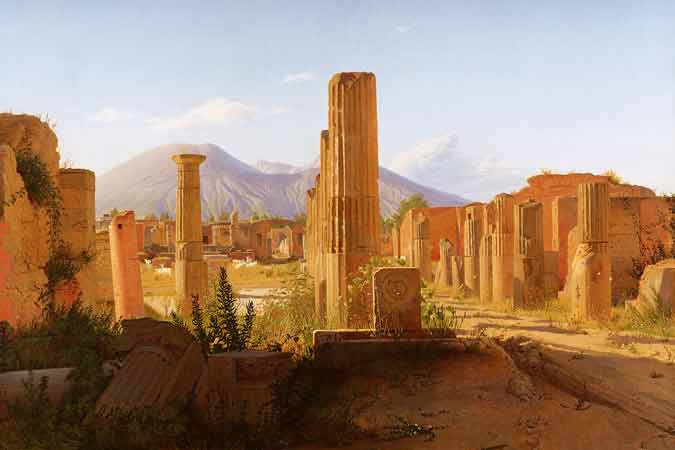
.
Lino Tagliapietra in Retrospect: A Modern Renaissance in Glass (Renwick)
Now through Jan. 11, 2009

Lino Tagliapietra in Retrospect: A Modern Renaissance in Glass is the first exhibition to thoroughly examine the art of Lino Tagliapietra (b. 1934), widely revered as a master of glass blowing and credited with changing the course of contemporary studio glass through his teaching. Tagliapietra, who was trained in traditional Venetian glass-blowing techniques, traveled between the glass centers of Venice, Italy, and the Pacific Northwest and brought with him the closely guarded techniques of the Murano glassworks. In 1979, he was invited to teach at the recently established Pilchuck Glass School near Seattle.
The exhibition, which features 140 works from the artist's 40-year career including objects that have never been exhibited, explores the evolution of Tagliapietra's work. It also documents his unparalleled contributions to the studio glass movement through his teaching that fostered a new generation of artists. Tagliapietra's enormous influence can be seen in the work of several artists represented in SAAM's collection, including Dale Chihuly, Dan Dailey, and Dante Marioni, who also are now masters of their craft. The exhibition curator is Susanne Frantz, former curator of twentieth-century glass at the Corning Museum of Glass in Corning, New York.
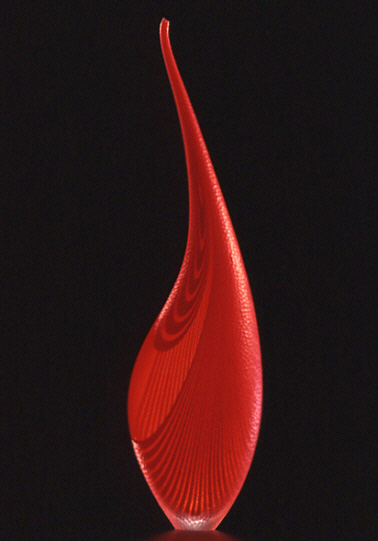
Credit
Lino Tagliapietra in Retrospect: A Modern Renaissance in Glass has been organized by the Museum of Glass in Tacoma, Washington. The exhibition is sponsored by Rebecca and Jack Benaroya, the Paul G. Allen Family Foundation, Russell Investments, Windgate Charitable Foundation, Heritage Bank and The Boeing Company.
The Smithsonian American Art Museum wishes to thank the James Renwick Alliance, John T. and Colleen Kollar Kotelly, the Art Alliance for Contemporary Glass, the Ryna and Melvin Cohen Family Foundation, The Karma Foundation and Sharon Karmazin, and Chris Rifkin for their generous support of the exhibition in Washington, D.C.
Publication
The catalogue, co-published by the Museum of Glass and the University of Washington Press, features essays by Susanne Frantz, Helmut Ricke, internationally acclaimed scholar and glass historian at the museum kunst palast in Düsseldorf, Germany, and Dante Marioni, an early Tagliapietra student and currently a leading glass artist in the United States. It is available in the museum store for $50.
Renwick Gallery
Location 1661 Pennsylvania Avenue NW (at 17th Street)
Washington DC 20006 Information: (202) 633-1000
CLICK HERE FOR: ITALIAN AMERICAN MUSEUMS ACROSS AMERICA
|CiaoAmerica.net|
Page last updated January 24, 2015